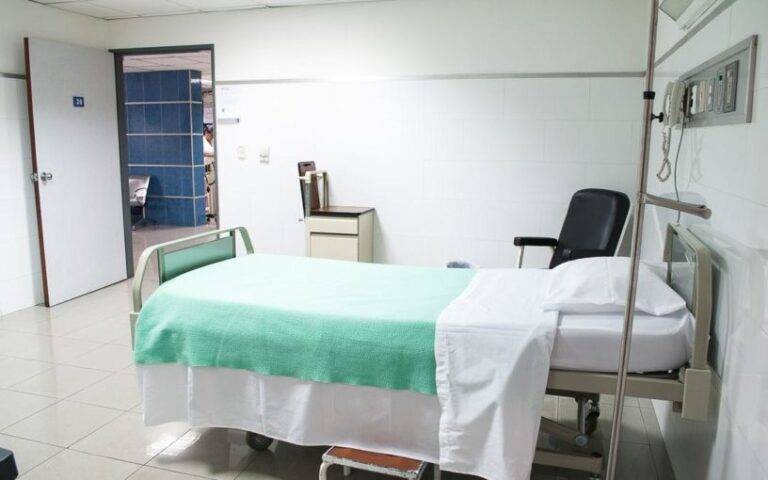
Get a second opinion and try to heal and get better. But with medical error as the third-leading cause of death in the United States, it can be hard to feel safe going to your appointments–especially if there’s something seriously wrong. That's why learning examples of medical malpractice can be so valuable.
Your doctor has a responsibility to you as a patient. When they fail, you need help to deal with the consequences.
More than that, you deserve respect as a patient in need of help.
Here are some of the most common examples of medical malpractice and how you can protect yourself if you were a victim of a doctor’s negligence.


Medical malpractice is a subset of common law under personal injury or tort law, designed to protect the plaintiff (you) from future harm and to compensate you for harm caused.
To be considered medical malpractice under the law, the claim must have the following characteristics:
Misdiagnosis, in personal injury cases, can cover a few different things.
Sometimes, your doctor diagnoses you with one condition, when in reality you have a different condition altogether. A common example of this is diagnosing a patient with the flu when in reality they have Lyme disease.
But misdiagnosis can also mean a failure to diagnose, resulting in inaccurate treatment (or no treatment at all).
This is more common than you would think–in fact, it’s more commonly seen in medical malpractice cases than surgical or drug errors.
Commonly misdiagnosed conditions include:
Sometimes, these conditions present in unusual ways that wouldn’t make sense unless the doctor was looking for them. Those aren’t examples of medical malpractice.
It is negligence when a doctor fails to diagnose or misdiagnoses something that any doctor with their level of training and available information should have been able to figure out.

Related to misdiagnosis is delayed diagnosis. In fact, the two often go hand-in-hand.
Delayed diagnosis may occur when a doctor misdiagnoses or fails to diagnose a condition, allowing the condition to progress further in the meantime, whcih is definitely an example of medical malpractice. This can have a detrimental effect on the patient’s health, especially in severe illnesses like cancer.
In order to qualify as a case of negligence in delayed diagnosis, the doctor must have treated the patient less thoroughly than other doctors would have under the same circumstances. For example, the doctor may not have ordered a necessary test that would have made logical sense to pursue.
The trick with this type of personal injury case is proving that your condition would have been materially better if the doctor had begun treatment sooner.
In cancer cases, this can be difficult to prove, as there is a possibility that cancer would have progressed the same way regardless of when treatment started, especially in late-stage cancer treatment.

Find Out What YOUR Case Might Be Worth...for free.
You spend months preparing for the newest addition to your family. You decorated a nursery, picked out names, and dreamed about what your child would accomplish in the years to come and the person they would grow up to be.
Then, your doctor made a mistake during birth or prenatal care, leading to an injury that will affect your baby for the rest of their life.
One of the most devastating medical malpractice cases for any young family to endure is childbirth injuries. Some of these injuries are minor and can be remedied with treatment, while others have a more severe impact.
Here are some of the most common medical problems associated with medical negligence and childbirth injuries:
These injuries place a heavy burden on the parents, both emotional and financial as they try to care for their child.
Surgical errors are perhaps the most infamous form of medical negligence, even if they aren’t the most common type.
After all, when you undergo extended surgery, you tend to expect that your surgeon is an experienced, capable professional. The prospect of your surgeon making a critical error while you’re on the table is an unfathomable and terrifying notion.
Surgical errors can include a wide variety of possible mistakes, but a few common ones include:
These errors most often occur when a doctor incorrectly reads a patient chart, neglects to review medical instructions, or clears a patient for the wrong surgery.
Sometimes, these mistakes are minor. But sometimes, they can result in serious consequences for the patient, from lifelong

When you go to the doctor, you expect them to have the knowledge and experience necessary to prescribe you the right medication.
But medication errors are far more common than you might think. If any healthcare provider anywhere in the chain makes a mistake, a patient could be administered 100 times too much (or too little) medication…or the wrong medication entirely.
Medication errors can occur in:
Medication errors can also include failure to consider a patient’s age or medical history when prescribing a medication or failure to account for allergies when prescribing medication.
This may come from any number of factors, from an irresponsible perception of risk to inadequate knowledge of the patient or the drug to poor communication.
Regardless of the type of error or why it was caused, you as a patient deserve to receive proper treatment by your doctor. If your doctor fails and medication causes you serious harm, you may have a malpractice case.

Surgery is a terrifying prospect for most people. What’s scarier, though, is the fact that dangerous mistakes can happen before you ever enter the operating room.
Anesthesia is a risky part of any surgical operation, which is why your surgeon doesn’t administer the anesthetic. Instead, anesthesia is administered by a doctor specifically trained in how to safely administer and monitor anesthesia.
Prior to a procedure requiring anesthesia, an anesthesiologist will review your medical history, medical record, prior medications, allergies, and requirements for the operation, such as time and the procedure in question.
Anesthesia errors can occur at any point in the process, from negligent preparation to failure to inform the patient of safety procedures before an operation to failure to properly monitor the anesthesia during the operation.
In some ways, anesthesia errors can be more dangerous than surgical errors, as it’s far easier for an anesthesia error to cause serious brain damage. And surgery is risky enough without anesthesia errors.
A hospital is the safest place to be if you’re seriously injured or dangerously ill. It has the equipment and medical staff at hand to handle almost any medical emergency.
But because of this, hospitals are also full of pathogens, from ordinary people moving throughout the facility to harmful pathogens brought in by ill or injured patients. It shouldn’t be surprising, then, that intensive care units are among the most common places for patients to acquire hospital-associated infections.
In order to qualify as a hospital infection, the infection must occur:
Hospital infections can be caused by bacterial, viral, or fungal pathogens, all of which come together on a regular basis in a hospital. Common types of hospital infections include:
Hospital infections can also include things like gastrointestinal infections, soft-tissue infections, lower respiratory tract infections, cardiovascular infections, and infections of the central nervous system, all of which are potential examples of medical malpractice.

Would you like to know more about the medical malpractice lawyer chicago? Click Here
If you or a loved one is dealing with a situation like this, give us a call any time, day or night. We are here to help. 312-500-4500.


Scott DeSalvo founded DeSalvo Law to help injured people throughout Chicago and surrounding suburbs. Licensed to practice law in Illinois since 1998, IARDC #6244452, Scott has represented over 3,000 clients in personal injury, workers compensation, and accident cases.
No Fee Unless You Win | Free Consultation | 24/7 Availability Call or Text: (312) 500-4500
>>Read More
Main Office:
1000 Jorie Blvd Ste 204
Oak Brook, IL 60523
New Cases: 312-500-4500
Office: 312-895-0545
Fax: 866-629-1817
service@desalvolaw.com
Chicago and Other Suburban Offices
By Appointment Only